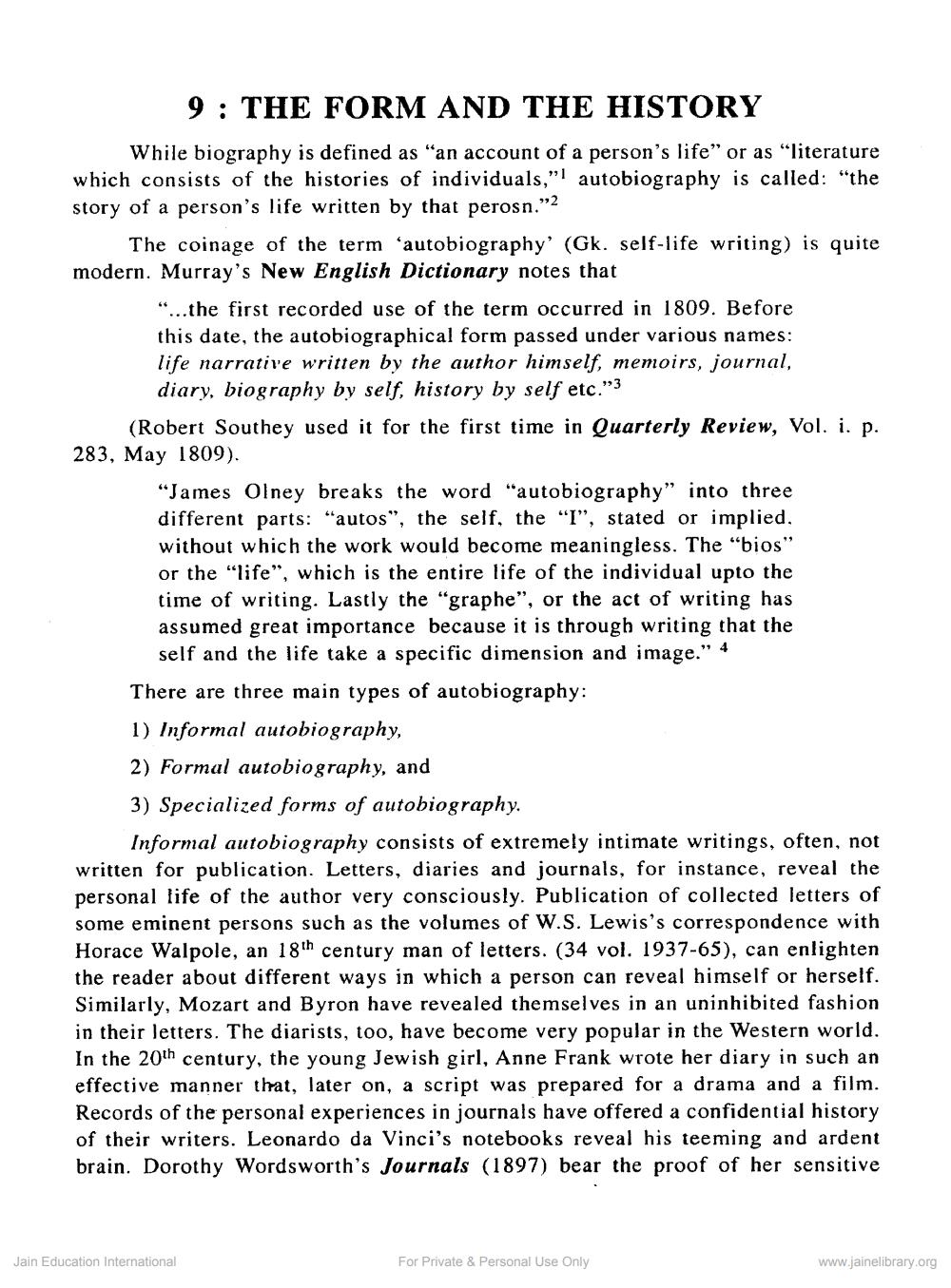________________
9: THE FORM AND THE HISTORY
While biography is defined as "an account of a person's life" or as "literature which consists of the histories of individuals," autobiography is called: "the story of a person's life written by that perosn."
The coinage of the term 'autobiography' (Gk. self-life writing) is quite modern. Murray's New English Dictionary notes that
"...the first recorded use of the term occurred in 1809. Before this date, the autobiographical form passed under various names: life narrative written by the author himself, memoirs, journal, diary, biography by self, history by self etc."3
(Robert Southey used it for the first time in Quarterly Review, Vol. i. p. 283, May 1809).
"James Olney breaks the word "autobiography" into three different parts: "autos", the self, the "I", stated or implied. without which the work would become meaningless. The "bios" or the "life", which is the entire life of the individual upto the time of writing. Lastly the "graphe", or the act of writing has assumed great importance because it is through writing that the self and the life take a specific dimension and image." 4
There are three main types of autobiography:
1) Informal autobiography,
2) Formal autobiography, and
3) Specialized forms of autobiography.
Informal autobiography consists of extremely intimate writings, often, not written for publication. Letters, diaries and journals, for instance, reveal the personal life of the author very consciously. Publication of collected letters of some eminent persons such as the volumes of W.S. Lewis's correspondence with Horace Walpole, an 18th century man of letters. (34 vol. 1937-65), can enlighten the reader about different ways in which a person can reveal himself or herself. Similarly, Mozart and Byron have revealed themselves in an uninhibited fashion. in their letters. The diarists, too, have become very popular in the Western world. In the 20th century, the young Jewish girl, Anne Frank wrote her diary in such an effective manner that, later on, a script was prepared for a drama and a film. Records of the personal experiences in journals have offered a confidential history of their writers. Leonardo da Vinci's notebooks reveal his teeming and ardent brain. Dorothy Wordsworth's Journals (1897) bear the proof of her sensitive
Jain Education International
For Private & Personal Use Only
www.jainelibrary.org




